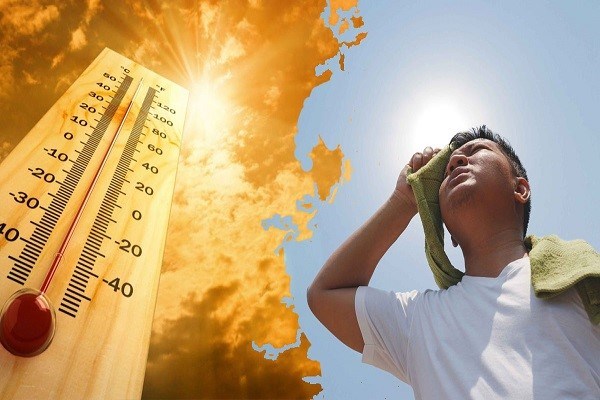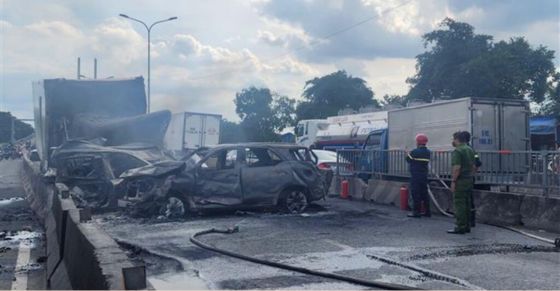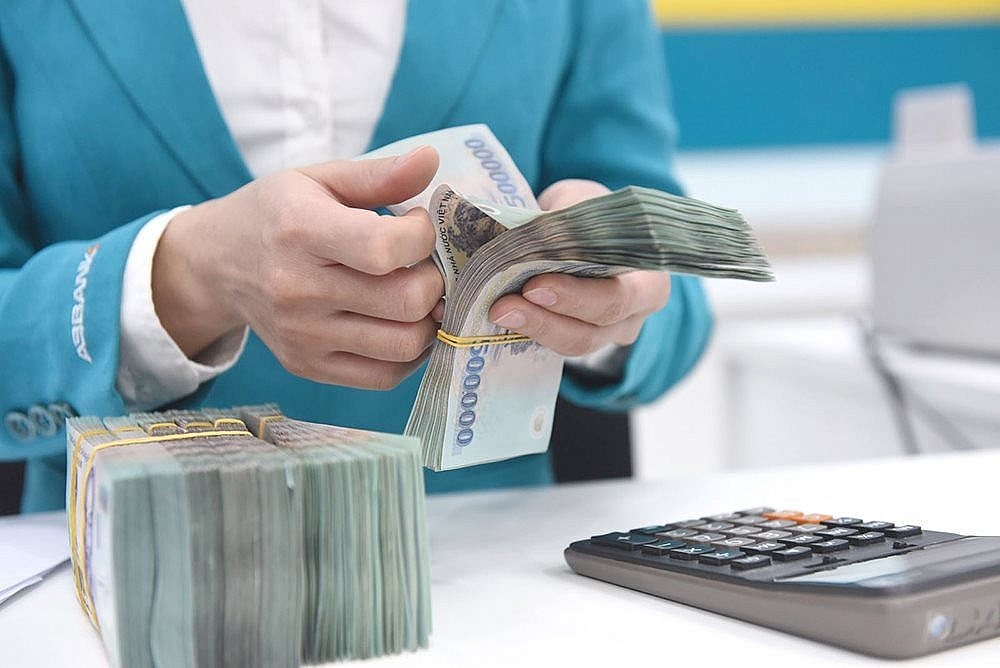Guidelines for health care during hot weather for the community and employees in Vietnam
What are the detailed guidelines for health care during hot weather for the community and employees in Vietnam? - Truc Linh (Binh Thuan)

Guidelines for health care during hot weather for the community and employees in Vietnam (Internet image)
On April 3, 2024, the Department of Environmental Health Management issued Official Dispatch 104/MT-SKMT on prevention and protection of community health and workers from the impacts of hot weather, drought, and saltwater intrusion.
Guidelines for health care during hot weather for the community and employees in Vietnam
(1) Common health issues during hot weather
During hot weather, some common health issues may occur, such as sunstroke, heat exhaustion, or heat stroke.
The main causes are prolonged exposure or working in hot and high-temperature environments, or sudden changes in environmental temperature.
Some high-risk groups include:
+ The elderly, children, and pregnant women.
+ People who work or exercise with high intensity under the hot sun or in hot environments: agricultural workers, workers in brick kilns, steel mills, etc.
+ People with chronic diseases: high blood pressure, chronic obstructive pulmonary disease, bronchial asthma, diabetes, etc.
(2) Symptoms
The symptoms of common health issues during hot weather depend on the duration of exposure to the hot weather and the degree of body temperature increase.
+ Mild symptoms: Fatigue, thirst, blurred vision, dizziness, increased heart rate, increased breathing rate, palpitations, muscle cramps.
+ Severe symptoms: Severe headache, gradually increasing difficulty breathing, feeling nauseous or vomiting, weakness or paralysis on one side of the body, convulsions, fainting or unconsciousness, cardiac arrhythmias (rapid heartbeat, low blood pressure, etc.), and possible death.
(3) Solutions
When encountering health issues due to hot weather, depending on the severity of the symptoms, it is necessary to quickly apply appropriate measures as follows:
- Mild symptoms:
+ Immediately move the victim to a cool and well-ventilated place.
+ Loosen or remove some of the victim's outer clothing. Then, wipe the victim's body with a cool towel or pour cool water on the victim's body and then dry it. Place a wet towel or ice water on areas such as the armpits, groin, and sides of the neck to quickly reduce body temperature.
+ If the victim can drink water, give them small sips of cool water. It is best to drink water with added salt and minerals, such as Oresol, in the correct dosage according to the instructions.
+ If the victim experiences muscle cramps, gently massage the affected area.
+ Note: Do not crowd around the victim. After about 10 - 15 minutes, the symptoms will gradually decrease.
- Severe symptoms:
If the victim shows severe symptoms, call emergency services at 115 or quickly take the victim to the nearest medical facility. During transportation, frequently apply cool compresses to the victim.
(4) Prevention measures
* General recommendations
- Limit going outside in the sun during hot days, especially from 10 am to 4 pm.
- People who are in air-conditioned rooms should not suddenly go out into the sun but should have a period of time for the body to adapt to the outdoor environment by increasing the air conditioning temperature in the room or sitting in the shade before going outside.
- Wear light-colored, breathable clothing that absorbs sweat.
- Increase consumption of vegetables and fruits, and include soup in daily meals. Especially, drink a minimum of 1.5 - 2 liters of water per day. Drink water multiple times throughout the day, and avoid drinking too much water at once.
- Exercise to improve physical fitness and enhance resistance and tolerance to hot weather conditions.
* For people who have to work in hot weather
- Arrange working hours during cooler times, such as early morning or late afternoon. Limit working in high-temperature environments. If it is necessary to work, do not work for too long in hot environments and avoid excessive physical activities. Take regular breaks in a cool place for 15 - 20 minutes after working for about 45 minutes to 1 hour.
- Minimize the area of sun exposure on the body, especially the neck and shoulders. Use appropriate personal protective equipment when working in the hot sun, such as protective clothing, hats, caps, and goggles. Wear loose, breathable, and sweat-absorbing clothing. Sunscreen can also be used.
- Do not consume alcoholic beverages. Drink water regularly during working hours. Especially, drink water with added salt and minerals like Oresol for those who sweat a lot during work. When drinking water, follow the manufacturer's instructions.
- Implement measures to cool the workplace, such as using shade structures, heat-reflective panels, insulation materials, water spray systems, misting systems, installing air conditioning systems, and appropriate ventilation fans.
More details can be found in Official Dispatch 104/MT-SKMT dated April 3, 2024.
Ho Quoc Tuan
- Key word:
- health care
- hot weather
- in Vietnam
- Vietnam
- Cases considered severe traffic accidents under new regulations in Vietnam
- Concessional loan for constructing and renovating social housing for lease in Vietnam
- Implementing the Memorandum of cooperation on tourism between Vietnam and Cambodia
- Standards for awarding the Emulation Flag of the People's Procuracy sector within the People's Procuracy sector in Vietnam from October 1, 2024
- Ceremony of announcement, awarding, and receiving emulation titles in the People's Procuracy sector in Vietnam from October 1, 2024
- Ministry of Education and Training of Vietnam's guidance on implementing digital transformation in education for the 2024-2025 school year
-

- Cases considered severe traffic accidents under ...
- 13:00, 16/08/2024
-

- Concessional loan for constructing and renovating ...
- 12:00, 16/08/2024
-

- Implementing the Memorandum of cooperation on ...
- 11:30, 16/08/2024
-

- Standards for awarding the Emulation Flag of the ...
- 11:00, 16/08/2024
-

- Ceremony of announcement, awarding, and receiving ...
- 10:30, 16/08/2024
-

- Cases considered severe traffic accidents under ...
- 13:00, 16/08/2024
-

- Concessional loan for constructing and renovating ...
- 12:00, 16/08/2024
-

- Implementing the Memorandum of cooperation on ...
- 11:30, 16/08/2024
-

- Standards for awarding the Emulation Flag of the ...
- 11:00, 16/08/2024
-

- Ceremony of announcement, awarding, and receiving ...
- 10:30, 16/08/2024
 Article table of contents
Article table of contents
